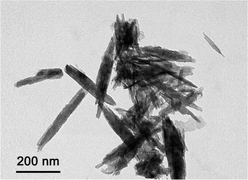Microstructural investigation of hydroxyapatite–polyelectrolyte composites
Abstract
Hydroxyapatite–poly-L-aspartic acid (HA-PASP) and hydroxyapatite–polyacrylic acid (HA-PAA) composite crystals have been prepared by direct synthesis in aqueous solution. The polyelectrolytes are quantitatively incorporated into the crystals up to about 8–9 wt%, as a function of their concentration in solution. The structural and morphological properties of the crystals vary as a function of polyelectrolyte content. TEM images show that the composite crystals display a greater length/width ratio with respect to the control HA crystals. The broadening of the X-ray diffraction reflections on increasing polyelectrolyte content was investigated using three different methods: (i) the Scherrer method, (ii) the Warren–Averbach approach, and (iii) a whole pattern analysis approach. Both polyelectrolytes induce a greater reduction of the mean crystallite size along a direction perpendicular to the c-axis direction, suggesting a preferential interaction of the


 Please wait while we load your content...
Please wait while we load your content...